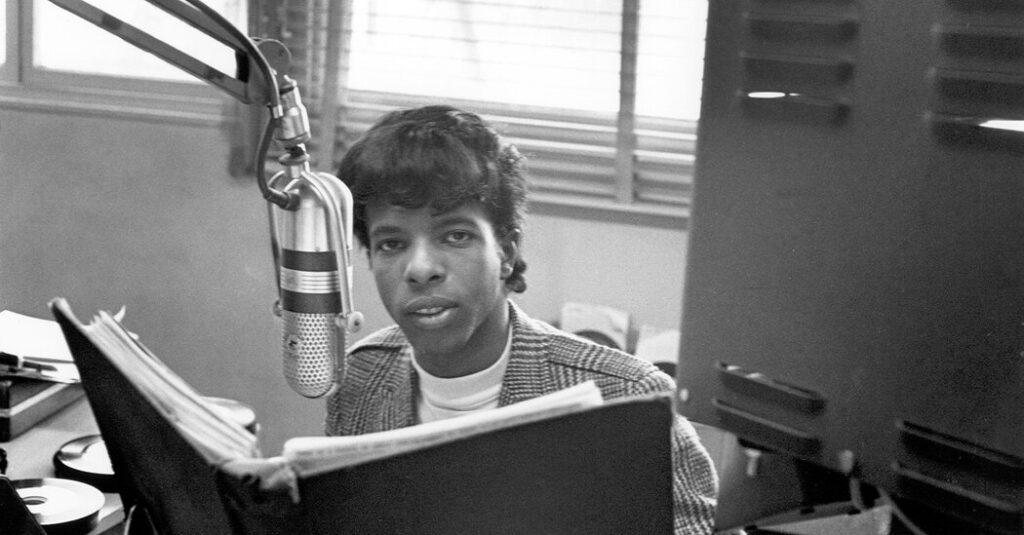On June 9, 2023, the world mourned the loss of Sly Stone, a musical innovator and the driving force behind one of the most significant bands of the late 20th century. Stone, known for his work with Sly and the Family Stone, blended genres such as funk, soul, and rock, pushing the boundaries of music and making lasting contributions to both the sound and the cultural landscape of America. The Bay Area played a pivotal role in Stone’s journey, shaping his music and his evolution as an artist and activist. His death at the age of 82 marks the end of an era, but his unparalleled legacy will continue to influence future generations.
An Artistic Journey: Early Life and Musical Roots
Sly Stone was born Sylvester Stewart in Denton, Texas, before his family moved to California, where he began his musical journey. Growing up in Vallejo, a city north of Oakland, Sly was deeply influenced by the vibrant local music scene. His early encounters with music were shaped by his family’s involvement in the Church of God in Christ, where he began making music as a child with his siblings. Stone’s passion for music led him to pursue studies in music theory and composition at Sonoma Community College, where he acquired foundational skills that he would later leverage in his illustrious career.
- Vallejo and the Bay Area: A pivotal location for Stone’s early music influences.
- The Family Unit: Sly collaborated closely with his siblings, laying the groundwork for his band.
- Diverse Early Groups: His exposure to multiracial bands predated his own group, Sly and the Family Stone.
Rise to Stardom: Sly and the Family Stone
In the late 1960s, Sly formed Sly and the Family Stone, a groundbreaking ensemble that featured a racially integrated group of musicians at a time when such diversity was rare in pop music. This blended family-like structure consisted of Sly, his brother Freddie, sister Rose, and long-time collaborators like bassist Larry Graham and trumpeter Cynthia Robinson, setting a precedent for inclusion in the music industry. The group quickly found commercial success with hits such as “Dance to the Music,” “Everyday People,” and “Stand!” Each song radiated messages of unity and celebration, echoing the hopeful ethos of the era while simultaneously grappling with the underlying tensions of the Civil Rights Movement.
Woodstock in 1969 marked a significant turning point for Sly and the Family Stone, performing in front of nearly 500,000 people and solidifying their status as icons of the counterculture movement. Their performance encapsulated the spirit of the time, invoking an audience of diverse backgrounds to dance and celebrate together—a stark contrast to the social unrest occurring outside the festival grounds. The band’s joyous blend of psychedelic rock and funk resonated deeply, presenting a hopeful vision for a more inclusive America.
The Cultural Significance of Their Sound
Stone’s music was notable not just for its infectious grooves but for its profound sociopolitical messages. Albums such as “There’s a Riot Goin’ On” were reflective of the dilapidated hopes of the 1970s as America faced rising violence and disillusionment. The album’s title directly referenced the chaotic Grant Park riot that occurred in 1970 when Sly and the Family Stone were set to perform. This album encapsulated the disillusionment of the post-1960s era, resonating with an audience that was feeling both exhausted and eager for change.
Challenges and Decline: Personal Struggles
Despite his early successes, Sly’s life was marred by personal struggles, including substance abuse and mental health issues. The pressures of fame took a toll on him, leading to erratic behavior, broken relationships, and a significant decline in public appearances. The band went through various changes, and by the mid-1970s, most original members had departed due to the tumultuous lifestyle and Stone’s unpredictability.
- Substance Abuse: Sly battled addiction, causing turmoil in both his personal life and professional career.
- Band Departures: The breakup of the original Family Stone contributed to the decline of the group’s success.
- Struggle for Normalcy: Efforts to reclaim his career often felt overshadowed by personal demons.
A Legacy of Influence
Despite the challenges Sly faced, his music has left an indelible mark on the industry. His innovative approach to songwriting and production has influenced countless artists in various genres, including funk, soul, rock, and hip-hop. Legends such as Prince, the Red Hot Chili Peppers, and D’Angelo credit Stone as a pivotal influence in their musical journeys.
Documenting the Legacy
As Stone’s legacy is examined in contemporary works, including Questlove’s documentary Sly Lives! (aka The Burden of Black Genius), his contributions to music, culture, and social justice continue to resonate. The film encapsulates how his life experiences shaped his revolutionary sound and offers insight into the burdens he carried as an influential figure.
Conclusion: A Celebration of Sly Stone’s Life
Sly Stone may have left us, but his spirit lives on through his music. As we remember this iconic figure, we celebrate not just his extraordinary talent but also his unwavering commitment to challenging societal norms. His life story inspires artists and fans alike to continue pushing boundaries and embracing the diversity that enriches our world. Sly and the Family Stone stood as a testament to a brighter, more inclusive future; a message that remains just as vital today as it was in the 1960s.
“There are days when it feels like things are going in the wrong direction, that every good thing has two bad things behind it. We have to find some way to live together without hurting each other.” – Sly Stone
Final Thoughts
As we continue to navigate the complexities of our society, Sly Stone’s message reminds us to embrace unity and creativity in the face of adversity. His revolutionary spirit and musical genius will forever be etched in the annals of music history, serving as a beacon of hope for future generations.

